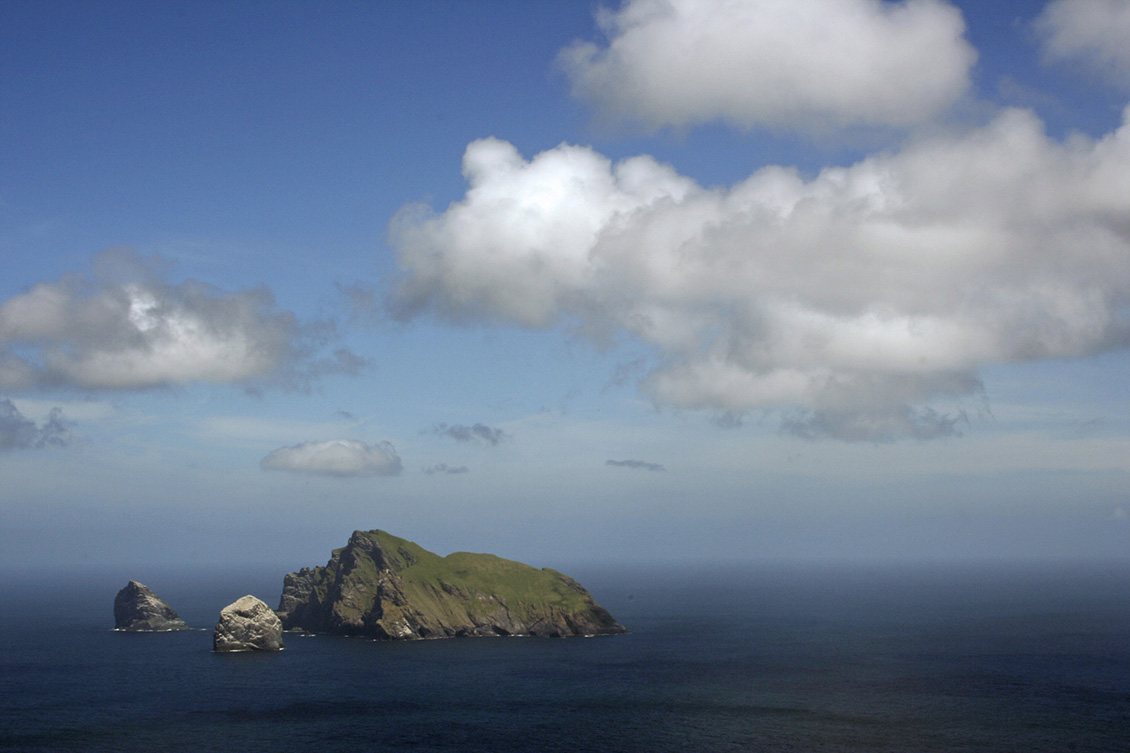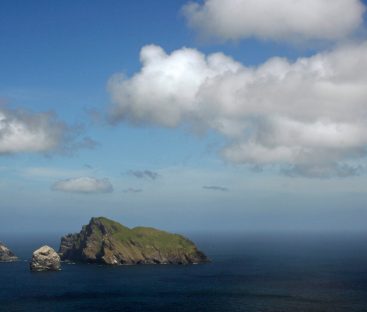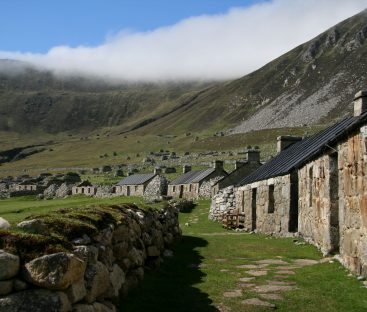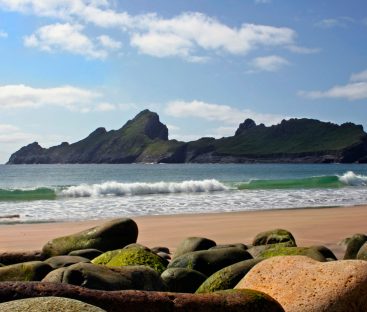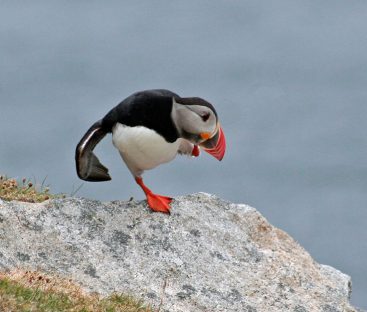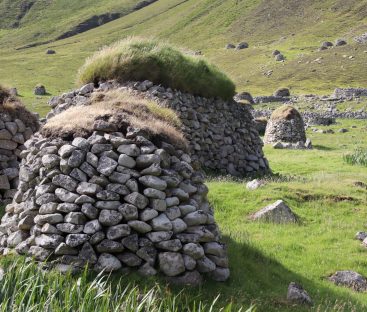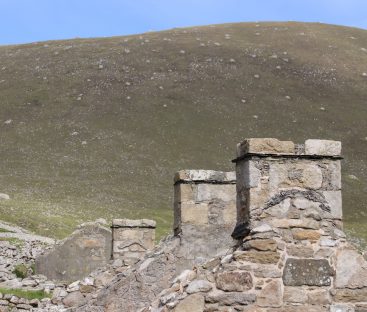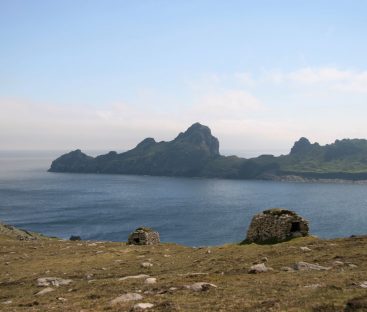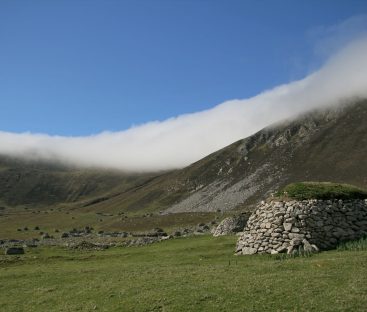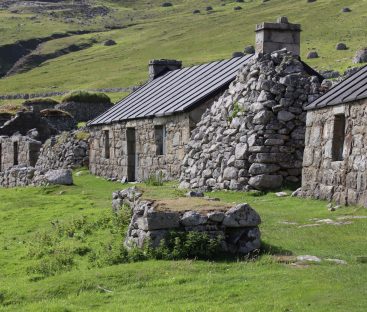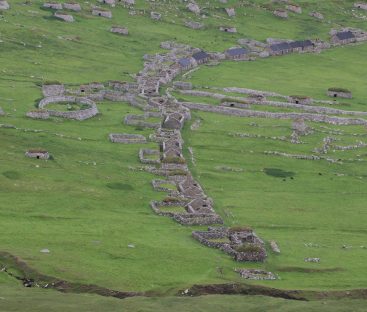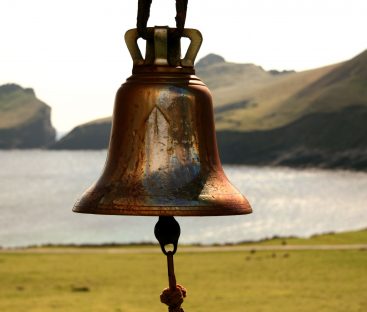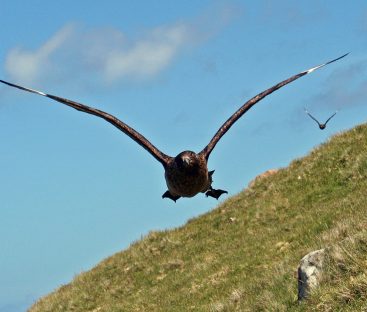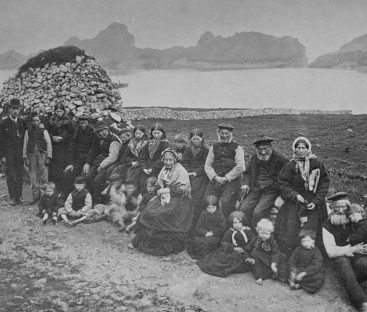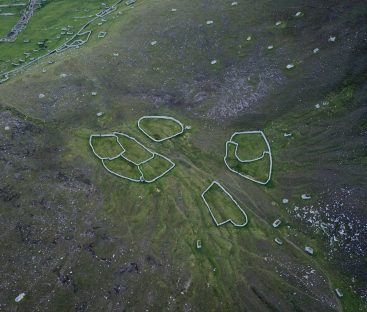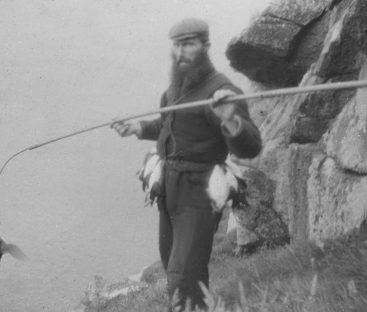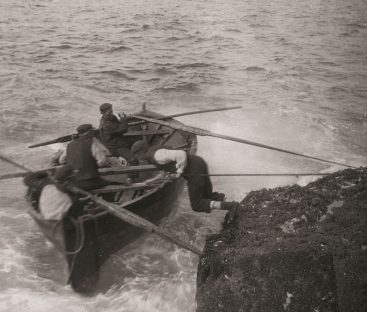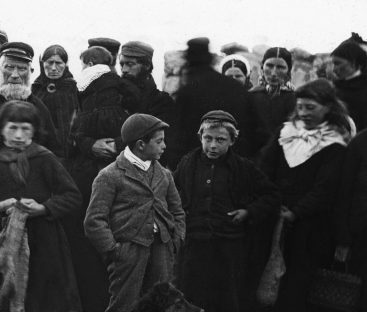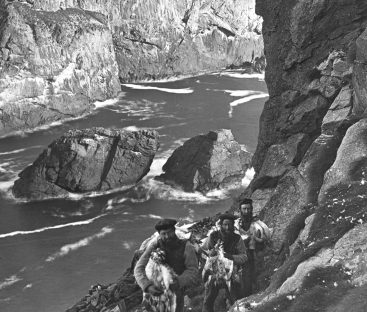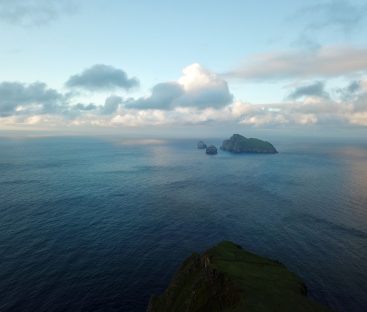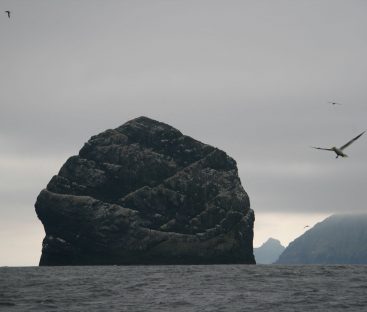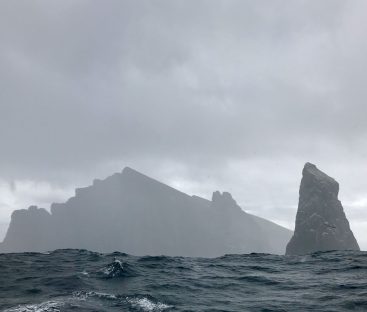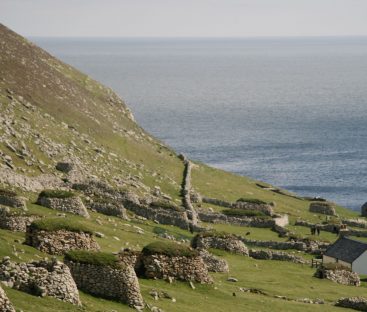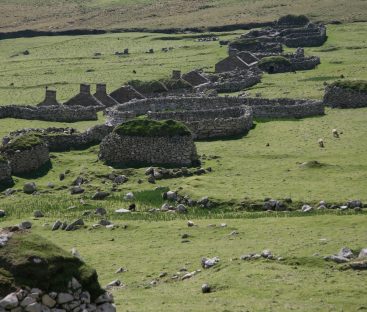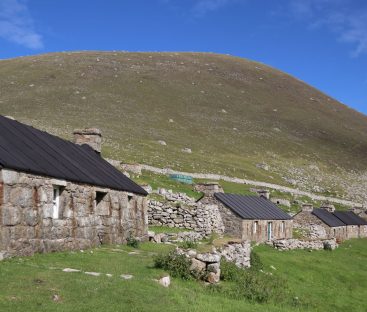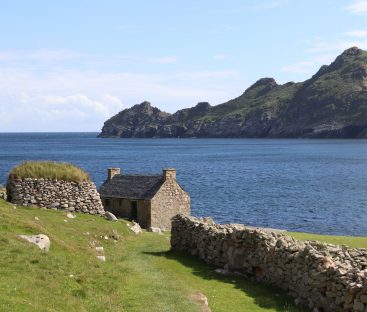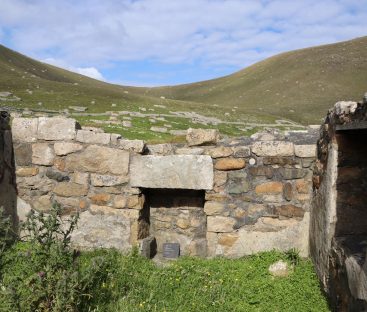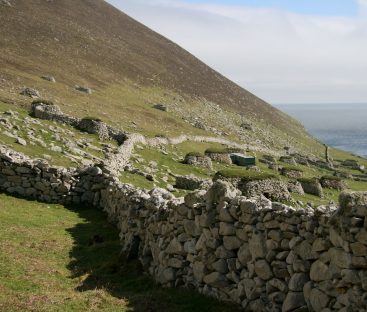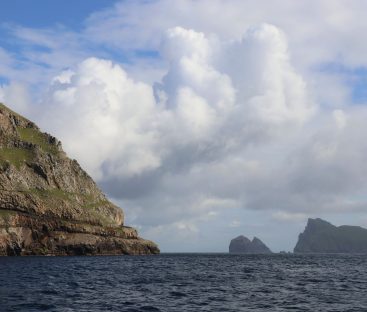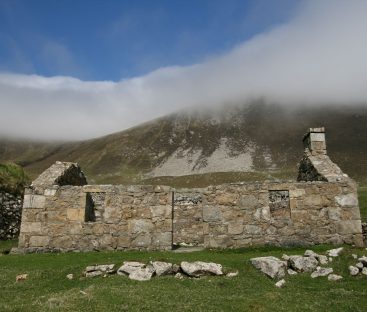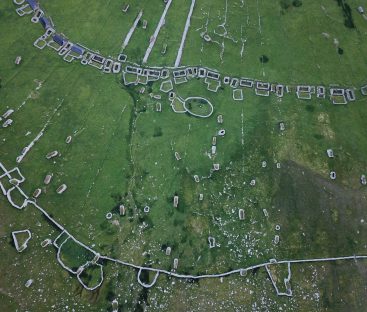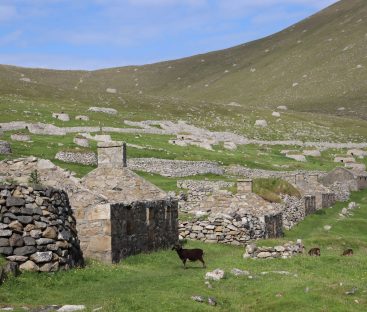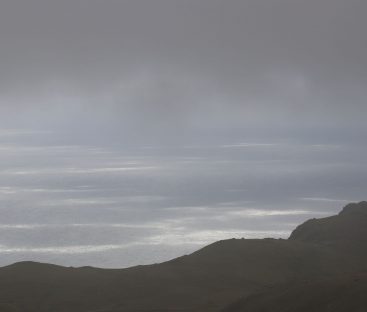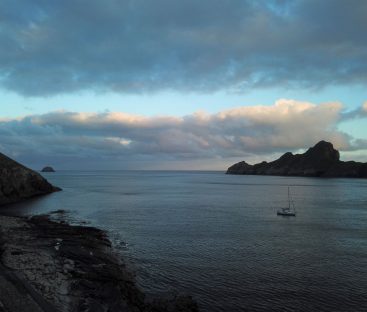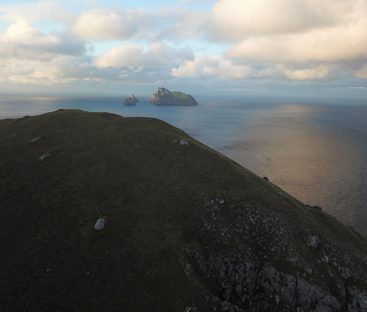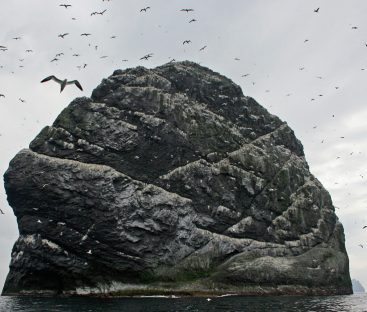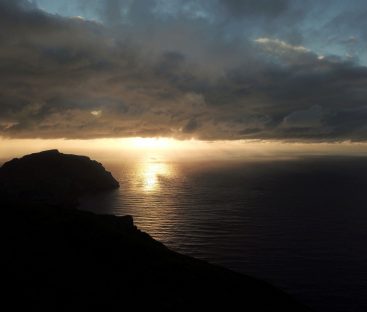St Kilda is a world famous archipelago lying 40 miles northwest of North Uist in the Atlantic Ocean. It comprises the westernmost islands of the Outer Hebrides of Scotland. The largest island is Hirta, whose imposing sea cliffs are the highest in the United Kingdom. Dún, Soay and Boreray are the three other islands which were used for grazing and seabird hunting by the islanders.
The MacLeod Estate has close historical links with St Kilda which was only sold by Reginald MacLeod of MacLeod in 1931, a year after the last island inhabitants had been evacuated by the government at their own request. There is a small exhibition of early photographs and St Kilda artefacts in Dunvegan Castle along with our St Kilda Shop & Gallery located by the Dunvegan Pier.
The origin of the name St Kilda is a matter of speculation. The islands’ human heritage includes numerous unique architectural features from the historic and prehistoric periods although the earliest written records of island life date from the late Middle Ages. The medieval village on Hirta was rebuilt by the MacLeod Estate in the 19th century after a severe storm, but illnesses triggered by increased external contacts with Victorian tourists and the upheaval of the First World War were factors which eventually lead to the island’s evacuation in 1930.
St Kilda may have been permanently inhabited for at least two millennia, but today the only year-round residents are military personnel and a variety of NTS conservation workers, volunteers and scientists during the summer months. As a World Heritage Site, it is well worth a visit despite its remote and exposed location.



